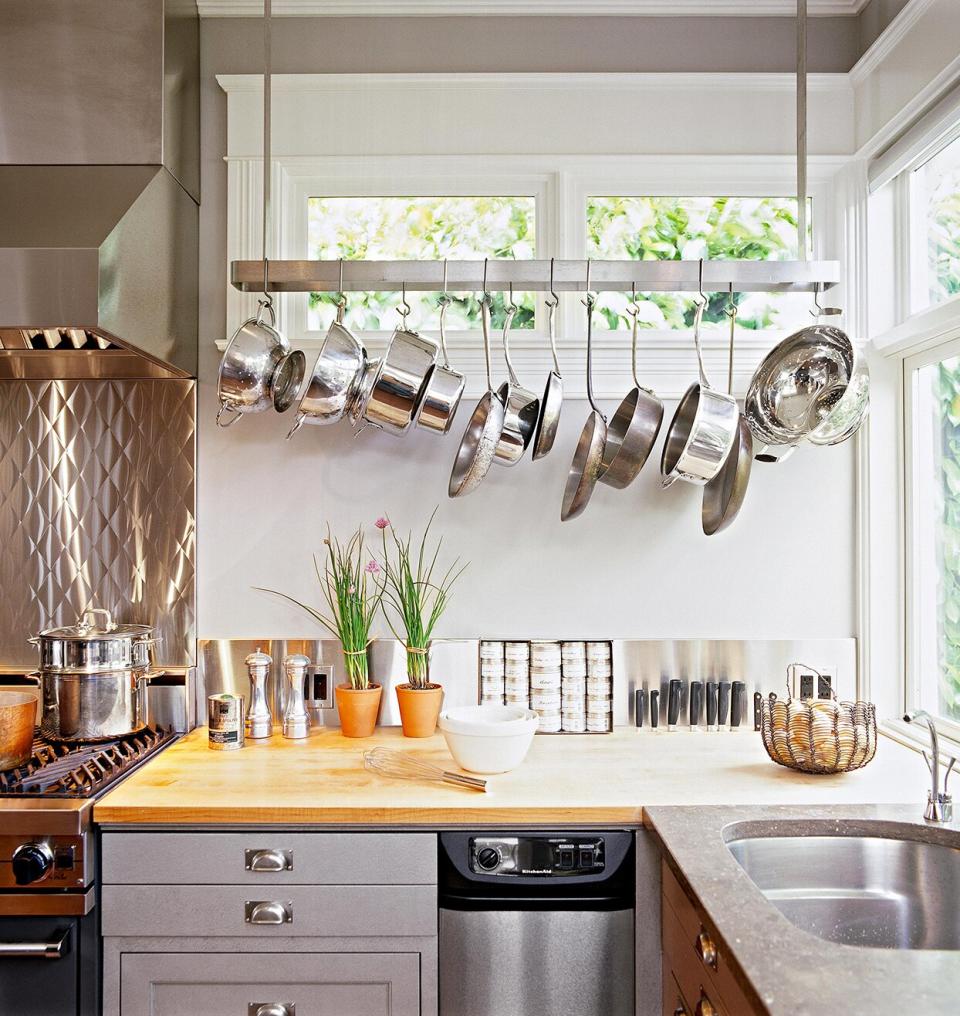How to Clean Stainless-Steel Pans and Keep Them Looking Brand-New
Stainless-steel pans are a staple in any cook's kitchen for good reason. This durable cookware heats up quickly and evenly, retains heat well, and doesn't require any special utensils or tricky maintenance like cast-iron skillets, for example, which require re-seasoning every so often. And since the material is non-reactive, you can cook just about anything in a stainless-steel pan without worrying about damaging the surface. However, although stainless steel is designed to resist corrosion and rust, it's not impervious to burnt-on messes and discoloration. With everyday use comes stains, water spots, and other stubborn marks, so it's important to know how to clean stainless-steel pans properly. With a few common household ingredients and some elbow grease, these methods for cleaning stainless-steel pans will restore their shiny, spot-free finish. Follow these tips to keep your cookware looking brand-new.

Bill Oxford/Getty Images
How to Clean Stainless-Steel Pans
Before you begin, check the manufacturer's instructions for any specific washing tips. Although many types of cookware are marketed as dishwasher-safe, hand-washing is typically the best way to clean stainless-steel pans. To avoid warping, always let your cookware cool down before cleaning. Never use abrasive tools like steel wool or harsh cleaners such as bleach or oven cleaner on your stainless-steel pans, as these can permanently damage the surface.
Related: How to Clean Nonstick Pans to Make Them Last for Years
For everyday cleanup, scrub your stainless-steel pan with hot soapy water and a nonabrasive sponge ($3, Target). If stuck-on food bits remain, fill the pan with enough soapy water to cover the residue, bring to a boil, and scrape with a spatula or wooden spoon. The food should come away easily. Allow the pan to cool, then wash as usual.
Tougher messes, including burnt food or oil, might require a more abrasive cleaning method. For a simple, inexpensive way to clean burnt stainless-steel pans, grab some baking soda from your pantry. Add a few spoonfuls of baking soda to your scorched pan along with enough water to cover the burnt areas. Bring to a boil and simmer until most of the water has evaporated. Turn off the heat and wait until the pan is cool enough to handle. Scrub away buildup with a nonabrasive sponge and wash in hot, soapy water. Alternatively, you can use a commercial cleaner such as Bar Keepers Friend ($2, Walmart) to clean stainless-steel pans, following the manufacturer's directions.
How to Remove Discoloration on Stainless-Steel Pans
Once your stainless-steel pans are clean, you might notice some rainbow-colored discoloration on the surface. This type of stain is typically caused by overheating the pan and can be easily removed with the help of distilled white vinegar. Simply splash some vinegar in your pan and wipe the area with a soft sponge before rinsing and drying fully.
Additionally, hard water can leave white, cloudy-looking residue on your stainless-steel pans. To get rid of this chalky buildup, bring a mixture of one part vinegar to three parts water to a boil in the pan. Let it cool, then wash with soap and water. For smaller water spots, wipe the pan down with a damp sponge sprinkled with baking soda. To prevent water spots in the first place, be sure to dry your cookware immediately after washing.

Jon Jensen
How to Care for Stainless-Steel Cookware
Prevention is key to keeping your stainless-steel pans clean and stain-free. Keep in mind that cold foods are more likely to stick to a hot pan, so allow refrigerated ingredients, such as raw meat, to sit at room temperature for 10 to 15 minutes before cooking. To prevent food from sticking, always preheat your pan before adding oil, then wait until the oil is hot to start cooking. When cooking pasta and similar dishes, wait to add salt until after the water is already boiling to avoid pitting corrosion, which causes small, irreparable dents in the bottom of your pan. With these simple tips, you can extend the life of your stainless-steel pans and keep this often-used cookware in pristine condition.

